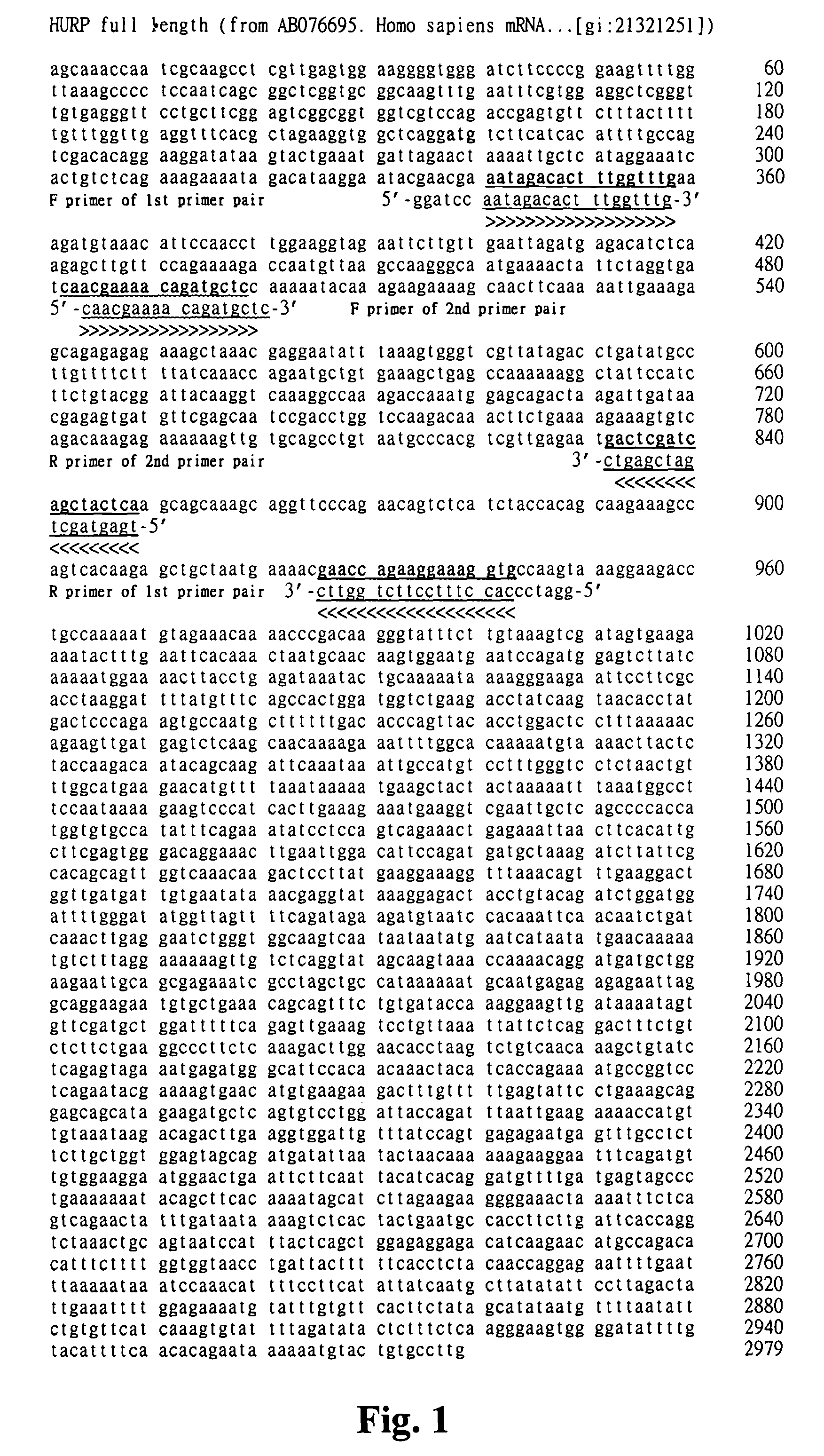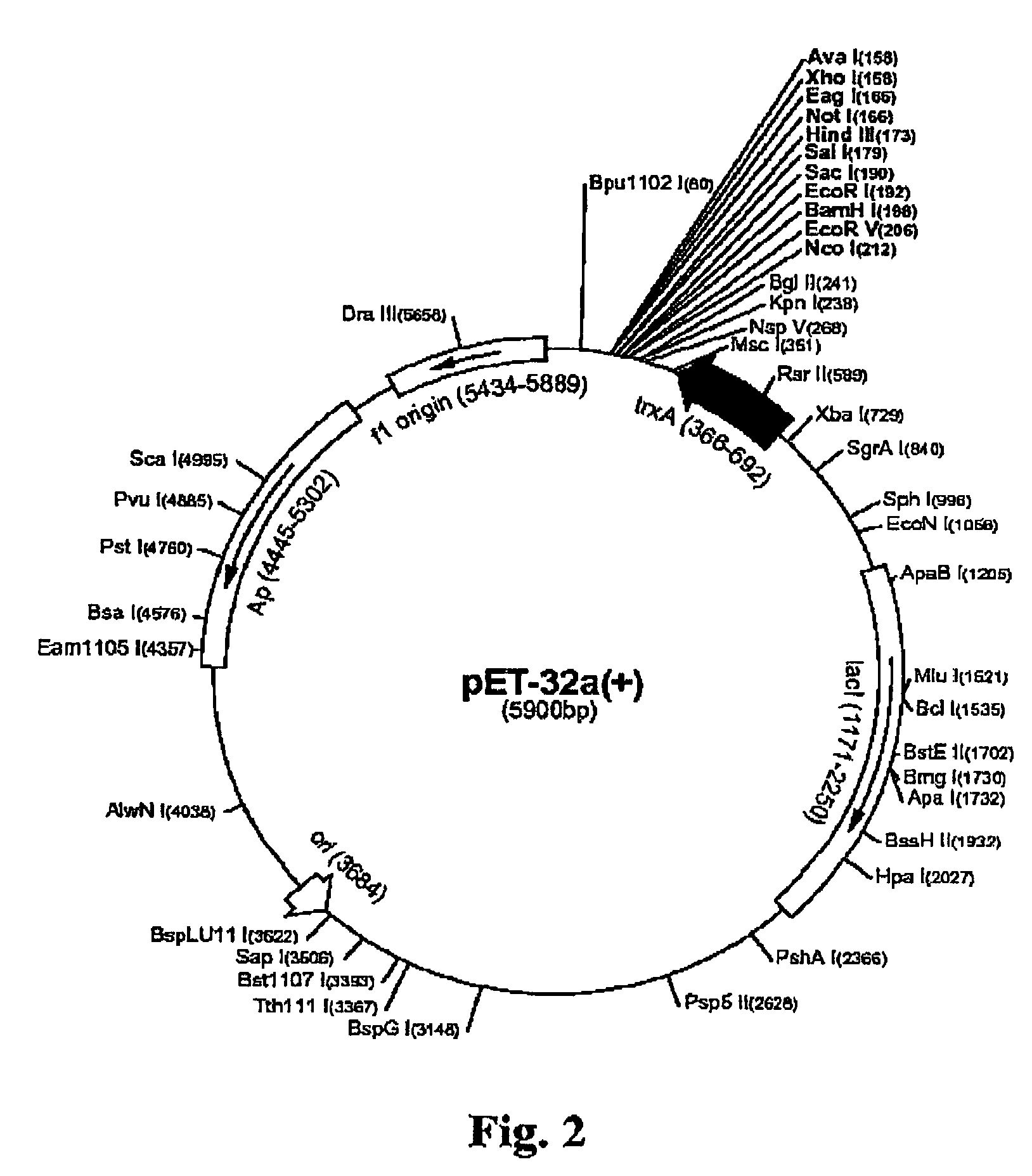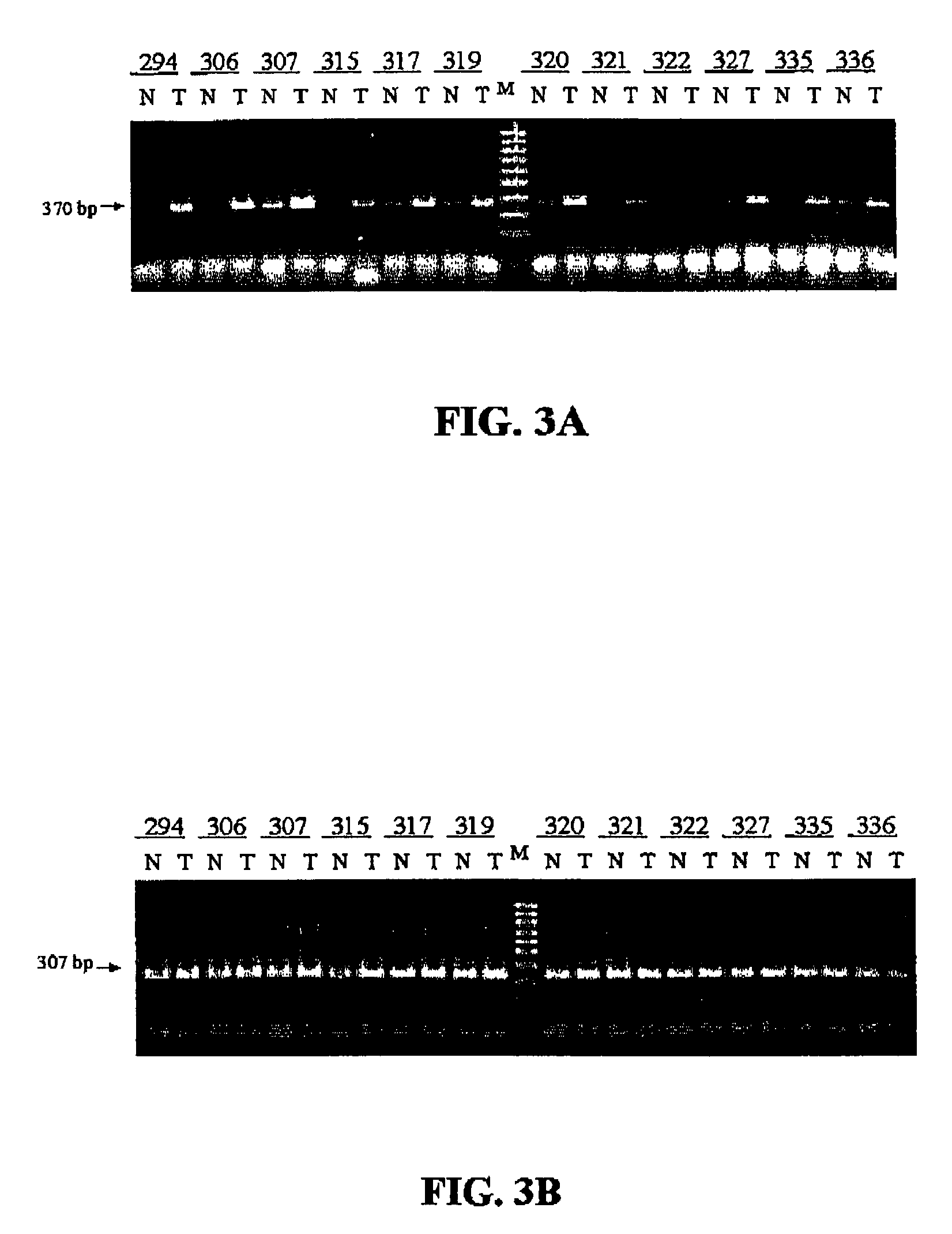HURP gene as a molecular marker for bladder cancer
a molecular marker and human hepatoma technology, applied in the field of human hepatoma upregulated protein (hurp) gene, can solve the problems of associated discomfort and the potential risk of infection by urethral instruments
- Summary
- Abstract
- Description
- Claims
- Application Information
AI Technical Summary
Benefits of technology
Problems solved by technology
Method used
Image
Examples
example 1
RT-PCR Analysis of HURP Gene Expression
Materials and Methods:
[0066]Eighty TCC samples from urinary tracts were obtained using cystectomy and transurethral resection in Chi Mei Medical Center from March 1998 through September 2001. Remote grossly normal tissues were also obtained for the analysis and they were regarded as the tumor-adjacent tissue samples. All tissue samples were frozen in liquid nitrogen and stored for varying periods at −86° C. Representative sections of each frozen block were embedded in paraffin and stained with hematoxylin-eosin and reviewed by a pathologist to assess the status of the tumors within the samples.
[0067]All specimens were graded using a modification of the World Health Organization classification and the pathological staging was according to the TNM pathological staging system (Epstein J I, Amin M B, Reuter V R, et al: The World Health Organization / International Society of Urological Pathology consensus classification of urot...
example 2
Evaluation of Tumor Specificity of HURP Gene Expression by RT-PCR Analysis
[0076]In order to determine whether the over-expression of HURP exhibited tumor specificity, the human HURP transcripts of prostatic urothelium from benign prostatic hyperplasia (BPH) patients were amplified using reverse transcriptase-polymerase chain reaction (RT-PCR).
[0077]The experiments were conducted according to the procedures as set forth in the above Example 1, except that HURP transcripts of prostatic urothelium from benign prostatic hyperplasia (BPH) patients were amplified using reverse transcriptase-polymerase chain reaction (RT-PCR) to determine whether HURP gene expression exhibited tumor specificity.
[0078]15 specimens of prostatic urothelium from BPH patients with normal cytoscopy were collected and subjected to RT-PCR. Referring to FIG. 4, the β-actin transcripts were equally amplified from five representative samples of BPH urothelium, but no HURP transcripts were detected in these samples. I...
example 3
Tumor Stage Evaluation by RT-PCR Analysis of HURP Gene Expression
[0079]In order to determine the possible correlation between the over-expression of HURP gene and the tumor grade, the human HURP transcripts of 45 pairs of tissue samples comprising a TCC and a counterpart of tumor-adjacent tissue samples were analyzed, and normalized with β-actin transcripts.
[0080]Referring to Table 1, it is noted that 35 tumor-adjacent parts (35 / 45, 77.8%) expressed less amounts of HURP gene than tumor parts (Group I, p<0.0001), and 10 tumor-adjacent parts (10 / 45, 22.2%) displayed nearly equal amounts of HURP gene to tumor parts (Group 2).
[0081]Eighty TCC patients with pathological identification of zero grade I, 37 grade II, 31 grade III and 12 grade IV were collected, and the human HURP expression ratios of the tissue samples are listed in Table II. It appears that no significant correlation is present between HURP expression and tumor grade. In those nine tumors with HURP-negative, six were grade...
PUM
| Property | Measurement | Unit |
|---|---|---|
| restriction fragment length polymorphism | aaaaa | aaaaa |
| nucleic acid sequence- | aaaaa | aaaaa |
| restriction fragments length polymorphism | aaaaa | aaaaa |
Abstract
Description
Claims
Application Information
 Login to View More
Login to View More - R&D
- Intellectual Property
- Life Sciences
- Materials
- Tech Scout
- Unparalleled Data Quality
- Higher Quality Content
- 60% Fewer Hallucinations
Browse by: Latest US Patents, China's latest patents, Technical Efficacy Thesaurus, Application Domain, Technology Topic, Popular Technical Reports.
© 2025 PatSnap. All rights reserved.Legal|Privacy policy|Modern Slavery Act Transparency Statement|Sitemap|About US| Contact US: help@patsnap.com



